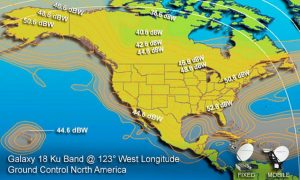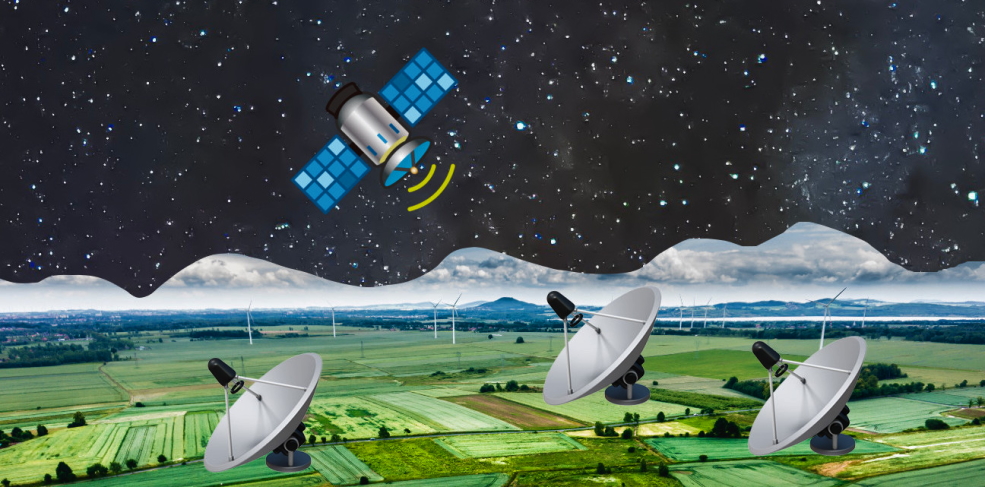What is Satellite Internet?
In terms of technology and services compared to the terrestrial internet, satellite internet has many advantages discussed in this article.

How does satellite internetwork, and what are the benefits of using it?
Faced with the need for round-the-clock communication for various economic sectors to develop the business activity of these sectors, telecommunications technology in recent years has created several systems and tools that are at the top of the reality of the need for round-the-clock communication regardless of Various conditions that may impede communication or coverage, such as weather or geographical location. Thus, the suppliers of this sector are focused on creating alternatives with the capacity to provide a stable and sufficient signal to ensure access to voice, data, and communications services in hard-to-reach areas.
One of these options is satellite Internet, which allows you to connect to remote locations without the need for complex terrestrial structures to access Internet service or run specific programs and/or develop to run.
It is important to know whether satellite latency affects how you use the Internet.
Satellite Internet can transmit and receive data from a relatively small satellite dish on Earth and communicate with a fixed Earth satellite in orbit 22,300 miles above the Earth’s equator. A satellite orbiting the earth transmits. And receives information from a place on earth called the network operations center (NOC) (pronounced knock). The NOC itself is connected to the Internet (or private network). All communications from a satellite dish to a satellite orbiting the Earth flow through the NOC before reaching the Internet.

Image: This simple diagram shows how data travels via a satellite network.
Satellite data communication is not much different from the case of a person using a terrestrial data provider, at least from an Internet user’s perspective.
The bottom line is that when the installer configures a satellite system, the satellite service acts almost like any other ISP and may be configured in the same way. There may be slight differences in satellite services compared to regular services.
Satellite data travels at the speed of light – 186,000 miles per second. The orbiting satellite is 22,300 miles from Earth, and data must travel four times that distance (PC to satellite, satellite to Knock / Internet, Knock / Internet to satellite, and satellite to PC). The time it takes is called a delay and is about half a second.
But What Problem does it solve?
Installing the infrastructure needed to provide Internet services requires a large investment. So these are mainly the main cities that have generally benefited from network access in the areas of trade, education, business, companies, and institutions located in the regions. Get away from remote and inaccessible areas.
However, satellite internet is an option different companies have used to overcome this communication gap. Because satellite internet does not require much investment in terms of infrastructure and offers different benefits to companies. it has:
- High-speed global coverage
- It saves
- Access to multiple devices
- Bandwidth ratio
- Trust the service
- Quick installation
High-speed global coverage
One of the most obvious advantages that satellite internet offers to companies is the ability to provide networks anywhere in the world at speeds of several megabits over long distances such as oceans and entire continents, which can be quickly and easily Cover a single satellite. Connecting many remote locations over long distances through a secure private link is also possible.
Offshore oil companies find it almost impossible to communicate directly with headquarters hundreds of kilometers away. Satellite is the most effective option, as it is difficult to establish a direct communication route over long distances due to the earth’s curvature and natural obstacles.
It saves
Installing a terrestrial internet service requires a high investment of time and cost. It may take several months to deploy fiber optics at estimated prices between $ 10,000 and $ 100,000 per fiber mile. For this reason, since satellite Internet does not require a complex infrastructure to operate, companies can reduce high costs in terms of construction and land connection.
Access to multiple devices
Satellite connectivity can be achieved through various portable and mobile devices with high-speed voice and data access anywhere on the planet. This is a great advantage for companies because it allows you to easily do your office activities such as sending and receiving text messages, holding video conferences, and accessing email.
Satellite longitude helps installers determine the location of a satellite. They also help find barriers between the installation site and the satellite.
What is a Fixed Earth satellite?
There is a place or altitude in the space around the earth that you can place a satellite in orbit related to that place so that the satellite looks fixed from the ground. What is happening is that the satellite is actually orbiting the earth at the same angular velocity as the earth orbits its axis. The satellite orbits the earth once in 24 hours, or exactly once a day. According to the physical laws of fixed earth satellites, they are only 22300 miles directly above the Earth’s equator and nowhere else.

Image: If you could see fixed Earth satellites, they (in the Northern Hemisphere) would appear like an arc across the southern horizon.
Latitude of a satellite
All fixed-Earth satellites have names like “Galaxy 18” or “AMC-4” and a geographical location. Longitude refers to the horizontal distance of long imaginary lines drawn from the North Pole to the South for global mapping. There are 360-degree longitude readings for the earth. If you know the longitude of a satellite, you know where the satellite is in the sky because all fixed Earth satellites are above the equator (or zero latitudes).
Longitude is divided into two halves on Earth: the western and eastern hemispheres. All orbital “slots” for satellites are between 0 and 180 degrees in the Eastern Hemisphere and between 0 and 180 degrees in the Western Hemisphere. A satellite orbiting the Galapagos Islands serving North and South America may have a slit or slit 101 degrees longitude west. A satellite orbiting Malaysia serving Asia and Australia may have an orbital gap of 100.5 degrees east longitude.
Satellite longitude helps installers determine the location of a satellite. They also help find barriers between the installation site and the satellite.
One of the most obvious advantages that satellite internet offers to companies is the ability to provide networks anywhere in the world at speeds of several megabits over long distances such as oceans and entire continents, which can be quickly and easily Cover a single satellite.
Satellite viewing angle
Any obstacle (such as a tree or a mountain) interferes with the satellite signal. There must be no obstruction between the location of the satellite dish and the satellite in orbit. We call this the industry’s clear “line of sight” of satellites. Fortunately, using the viewing angle calculator, it has become easier to determine if there is a clear line of sight. So All you need is a current address (anywhere in the world) and the satellite’s orbital length (see description of orbital longitude above).
Combine the two details, and the calculator gives you a compass pointing to the satellite and degrees above the location horizon, along with an interesting aerial view of the installation site, including a line that shows the direction of the satellite. Gives.
Satellite Delay
What (sometimes) noticed that distinguishes satellite services from other terrestrial ISPs is something called “delay,” a term commonly used in the satellite world. Delay refers to how long it takes for a single piece of information to make a round trip via a satellite connection. The delay is called “ping time” (or crack time).
Satellite data travels at the speed of light – 186,000 miles per second. The orbiting satellite is 22,300 miles from Earth. The data must travel four times that distance (PC to satellite, satellite to Knock / Internet, Knock / Internet to satellite, and satellite to PC). The time it takes is called a delay and is about half a second.
This is not a big-time for you or me, but some apps like VPN and real-time games do not like this time delay. Who wants to pull a virtual trigger and wait half a second for a gun to fire? It is important to know whether satellite latency affects how you use the Internet. Direct ground control services are delayed by between 500 and 650 milliseconds, which is only half the latency of service providers.
CIR – Committed Information Rate
CIR is a term often used in the satellite industry. This means that the satellite ISP is committed to ensuring your lowest speed. CIR is typically 1: 1, meaning you do not share your data channel with any other subscriber, and the maximum speed is available 100% of the time. CIR should not be confused with contentious ratios.
Satellite footprint
A satellite footprint indicates how a satellite dish can be placed to communicate with the satellite. The figure below shows the Galaxy 18 footprint for North America. Also mentioned is the satellite longitude of each satellite, which can use the satellite angle view calculator to find the angle of view of the satellite for any location on the planet.

ERIP – DWB and dish size
The effective isotropic radiation power at a high footprint (measured in decibels (dB). The numbers in the high footprint indicate the signal strength from the satellite on Earth. Also, The higher the dB, the higher the signal strength. So If you have a low dBW area, you may have to use a larger satellite dish to receive the signal.
Radio (Outdoor Equipment – ODU)

In addition to the dish (also called a reflector), what makes a satellite system is the BUC (pronounced Buck), the transmitter and receiver of the LNB. Both require a high-performance coaxial cable connected to a built-in satellite router.
But have different watts. The higher the wattage, the more the satellite system can operate at both speeds and adverse environmental conditions. Consumer systems typically use a one-watt BUC. Ground Control Most systems use a six-watt BUC.
Satellite router or satellite gateway

Many Ground Control services use iDirect satellite routers. Therefore This is where coaxial satellite dish cables connect to the inside of the building. And where the LAN can connect to the Internet. Note the Ethernet port on the back of the modem.











